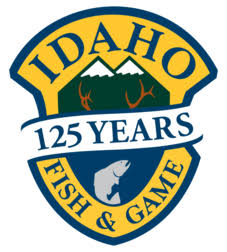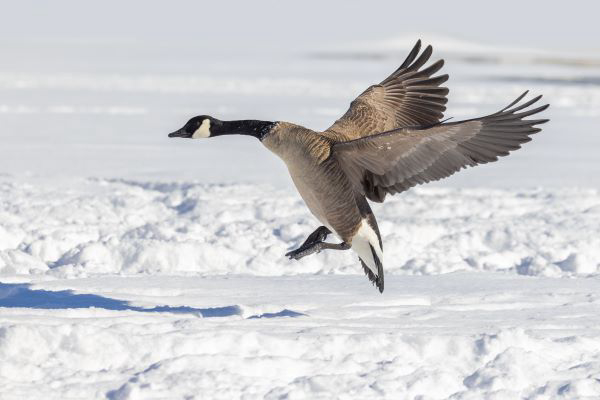Opportunities for small game hunting abundant in Michigan this fall

With seasons for several small game species set to begin later this week, the Department of Natural Resources offers a glimpse into some of the small game hunting opportunities Michigan has to offer.A base license, which allows hunters to hunt small game, can be purchased online at E-License or anywhere licenses are sold.
Rabbits
Season: Cottontail rabbits and varying (or snowshoe) hare can be hunted from Sept. 15 to March 31, 2017, statewide. The daily bag limit is five in combination with a possession limit of 10.
Outlook: Cottontail populations are good throughout their range over much of the state. Concentrate on thick cover, such as briar patches and brush piles, often near agricultural fields. Snowshoe hare populations are down from historic levels. Look for early-successional forests (such as aspen stands) and low-lying conifer swamps with blow-downs and brush piles in the northern two-thirds of the state.
Squirrels
Season: Sept. 15 to March 1, 2017. The daily bag limit is five per day with 10 in possession.
Outlook: Both fox and gray squirrel populations are at moderate to high levels across much of the state. Areas that had good mast production last year are a good bet, as are wood lots adjoining corn fields.
Ruffed grouse
Season: Sept. 15-Nov. 14 and Dec. 1-Jan. 1, 2017, statewide. The bag limit is five per day/10 in possession in the northern two-thirds of the state (Zones 1 and 2), and three per day/six in possession in Zone 3 (southern Michigan).
Outlook: “Grouse populations are cyclical, typically rising and falling over a 10-year period, and indications are that we are beginning the upward trend of the cycle. Spring drumming counts in 2014 and 2015 were up. Hunters are expected to see about the same or slightly more birds this year than in 2015,” said Al Stewart, DNR upland game bird specialist.
Young to moderate-aged aspen stands – about 6 to 15 years of age – with a thick understory of witch hazel or dogwood are prime grouse habitat. Food sources are important, but wild fruit and berry production should be very good this year due to good spring rains. Grouse are most numerous in the Upper Peninsula and northern Lower Peninsula, but hunters may find local populations in areas with good habitat in southern Michigan as well. Grouse and woodcock hunters are asked to assist the DNR in monitoring populations by reporting their results. Cooperator forms can be found on the DNR website at mi.gov/hunting (select Upland Game Birds and then Ruffed Grouse).
Woodcock
Season: Sept. 24 to Nov. 7 statewide. The daily bag limit is three with a possession limit of six.
Outlook: Michigan is the number-one woodcock harvest state in the nation. This fall, hunters can expect about the same results they had last year. Found in all parts of Michigan, woodcock are migratory, and although their population densities are higher in the northern two-thirds of the state, they often can be found in good numbers in southern Michigan later in the season as the birds head south. All woodcock hunters must obtain a free woodcock stamp in addition to a valid base license; the endorsement stamp is available at all license agents or online at E-License.
Sharp-tailed grouse
Season: Oct. 10-31 in the eastern Upper Peninsula, east of M-129 and east of I-75 north of M-48. The limit is two daily, with four in possession; six per season.
Outlook: Sharptails use grasslands and associated shrubby habitat; think pheasant habitat. Often found in small flocks and sometimes difficult to approach, sharptails often require relatively long-range shooting compared to ruffed grouse. Sharptail hunters are required to have a (free) sharp-tailed grouse endorsement on their hunting licenses.
Pheasants
Season: Oct. 10-31 in the Upper Peninsula in Menominee County and portions of Iron, Marquette, Dickinson and Delta counties, Oct. 20-Nov. 14 in the Lower Peninsula; and Dec. 1-Jan. 1, 2017 in selected areas of Zone 3 (southern Michigan). The limit is two cocks daily, with four in possession.
Outlook: Pheasant habitat is being highlighted in the state by a strong team of partners through the Michigan Pheasant Restoration Initiative. Pheasant populations have been in decline for a number of years, primarily because of changes in agricultural practices and/or urban sprawl. Typically, the best habitat is on private lands that have been managed for pheasants, especially those that are enrolled in farm set-aside programs, and many southern Michigan public lands are being intensely managed for pheasants too. Generally speaking, hunters who enjoyed success last year should find similar hunting conditions in the same areas. The best counties for pheasant hunting are in south-central to mid-Michigan and into the Thumb, though locally abundant populations can be found almost anywhere. Look for warm-season grasses, especially on idled farm fields. Late-season hunters can have success in cattail and shrub lands adjoining picked agricultural fields.
Quail
Season: Oct. 20-Nov. 14. Quail can be hunted only in Branch, Calhoun, Clinton, Eaton, Genesee, Gratiot, Hillsdale, Huron, Ingham, Ionia, Jackson, Kent, Lapeer, Lenawee, Livingston, Macomb, Monroe, Montcalm, Oakland, Saginaw, St. Clair, St. Joseph, Sanilac, Shiawassee, Tuscola, Washtenaw and Wayne counties. The bag limit is five per day/10 in possession.
Outlook: Back-to-back harsh winters and ice storms have significantly lowered quail populations. Quail hunters that had success last year can expect similar results in 2016.
Don’t forget that a base hunting license entitles hunters to hunt rabbit, hare, squirrel (fox and gray, black phase included), pheasant, ruffed grouse, sharp-tailed grouse, woodchuck, woodcock (HIP endorsement required), quail, crow, coyote (applies to Michigan residents only) and waterfowl (with a federal waterfowl stamp and Michigan waterfowl hunting license, if 16 years of age or older) during the open season for each species.
The 2016 Hunting and Trapping Digest has more information on small game species seasons dates and regulations.
For more information on Michigan hunting opportunities, visit mi.gov/hunting.





